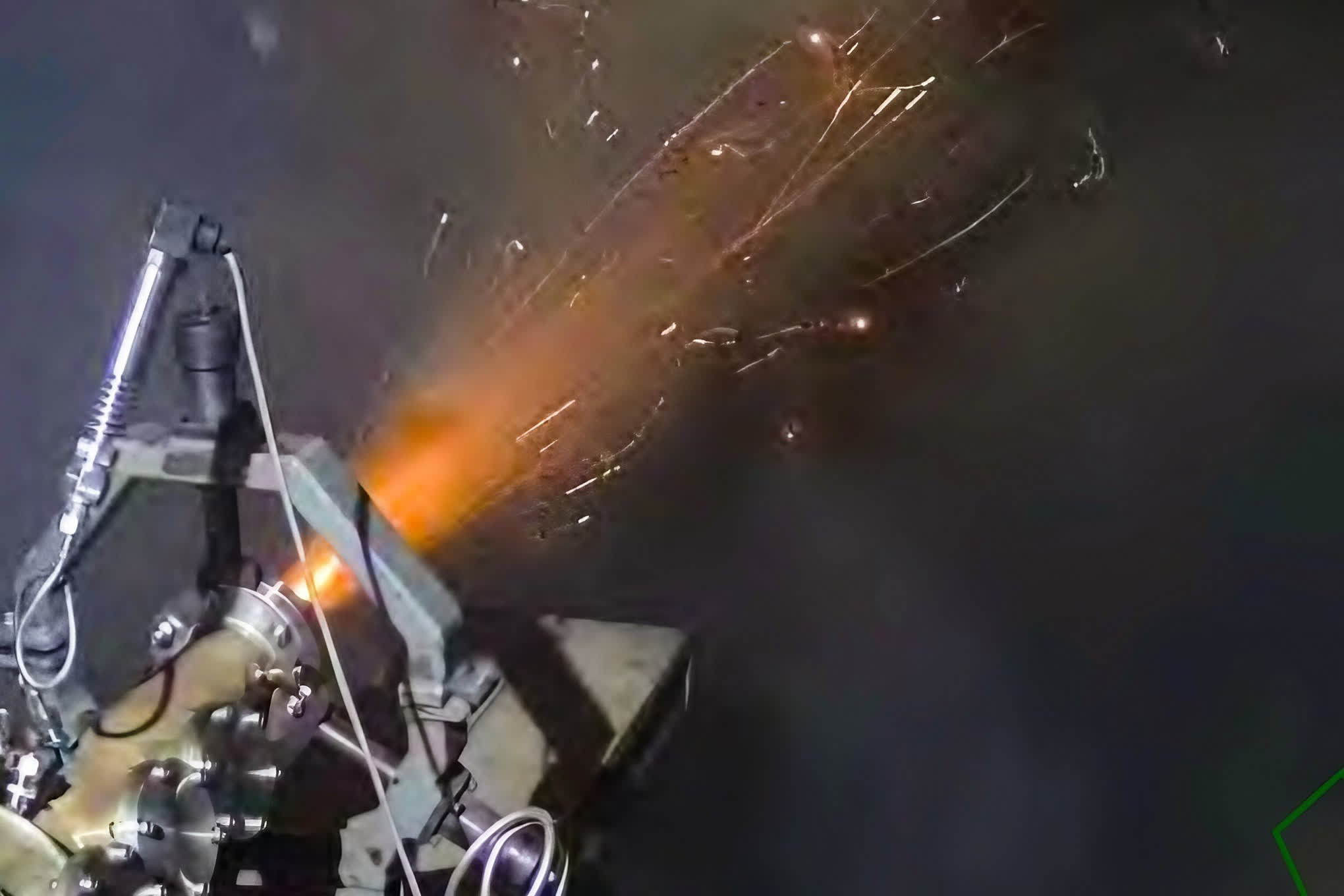2024-11-29 08:33:00
www.techspot.com
In brief: Researchers in China have successfully tested the world’s first boron ramjet engine that can operate both in the air and underwater. The engine was originally conceived for hypersonic weapons but has now been modified to use both air and water as oxidizers, allowing it to plunge into the sea after flying through the atmosphere.
The big reveal came last month when a team led by Professor Huang Liya at the National University of Defense Technology (NUDT) in Changsha published their findings in the Chinese Journal of Propulsion Technology. Their paper detailed how in ground tests simulating undersea conditions, the boron-fueled ramjet achieved a near 90% combustion efficiency in submarine mode – efficient enough for practical applications.
The engine works by firstly burning boron, an energetic lightweight element that China already uses in scramjet engines for hypersonic missiles. When boron meets oxygen, it burns intensely, easily accelerating a vehicle past five times the speed of sound. But getting it to ignite properly when underwater was the main challenge.

The South China Morning Post explains that the NUDT team overcame this by giving the boron a “second chance” to keep on burning through an optimized fuel injection design. They fine-tuned the amount of water vapor mixed into the combustion chamber along with metals like magnesium and aluminum that help the boron burn more completely when vaporized.
During testing, the engine produced a brilliant yellow exhaust plume at speeds exceeding three times the speed of sound, with combustion remaining stable throughout each run. Telemetry revealed the boron ramjet was achieving a specific impulse of over 4,700 Newton-seconds per kilogram. That’s one-third better than even SpaceX’s latest Raptor rocket engine.
The researchers say that engines like this could alter the future landscape of warfare. They envision stealthy drones or missiles soaring hundreds of miles through the air at hypersonic speeds, then plunging into the ocean to blast heavily defended targets like aircraft carriers at over 200 knots underwater. These could prove deadly since militaries currently lack countermeasures against such “cross-medium” hybrid weapons.
Next up, the team wants to push the boron content even higher in the solid fuel mixture to extract more energy while also further refining the combustion process.
Image credit: SCMP

Keep your entertainment at your fingertips with the Amazon Fire TV Stick 4K! Enjoy streaming in 4K Ultra HD with access to top services like Netflix, Prime Video, Disney+, and more. With an easy-to-use interface and voice remote, it’s the ultimate streaming device, now at only $21.99 — that’s 56% off!
With a 4.7/5-star rating from 43,582 reviews and 10K+ bought in the past month, it’s a top choice for home entertainment! Buy Now for $21.99 on Amazon!
Support Techcratic
If you find value in Techcratic’s insights and articles, consider supporting us with Bitcoin. Your support helps me, as a solo operator, continue delivering high-quality content while managing all the technical aspects, from server maintenance to blog writing, future updates, and improvements. Support Innovation! Thank you.
Bitcoin Address:
bc1qlszw7elx2qahjwvaryh0tkgg8y68enw30gpvge
Please verify this address before sending funds.
Bitcoin QR Code
Simply scan the QR code below to support Techcratic.

Please read the Privacy and Security Disclaimer on how Techcratic handles your support.
Disclaimer: As an Amazon Associate, Techcratic may earn from qualifying purchases.

















































![[01_Odyssey] Generative art Exhibition – Dark Room Experience](https://techcratic.com/wp-content/uploads/2025/09/1758190693_maxresdefault-360x180.jpg)
















































